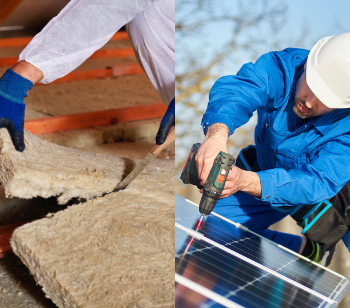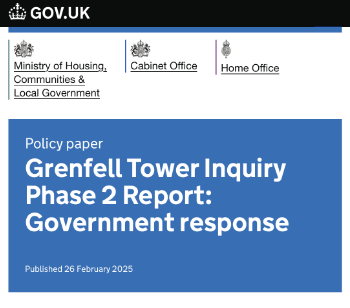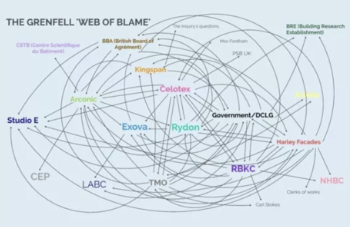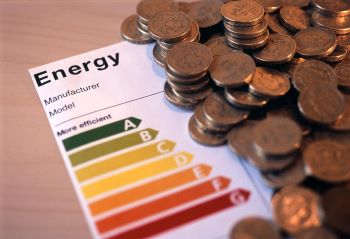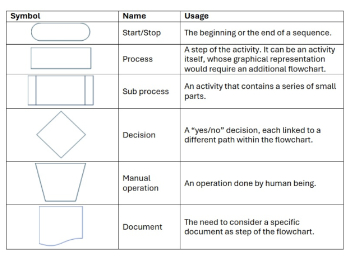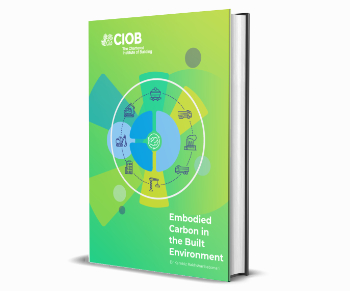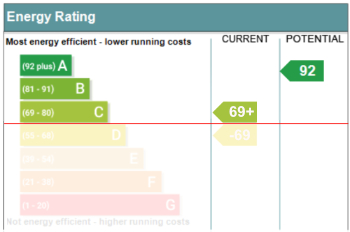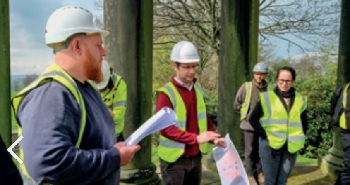Construction industry waste and the environment
[edit] Introduction
Construction is one of the most important business sectors in the world. Traditionally, it has also been one of the most polluting business sectors in the world. Over recent years, however, the construction industry has been taking steps to deal with this. Hopefully, this process of improvement will not only continue but pick up speed.
[edit] Types of construction waste
Construction waste can be divided into three main categories:
- Inert waste is mostly based on earth, sand, or stone. Typical examples of inert construction waste include aggregates, bricks, concrete, glass, masonry blocks, plaster, plastic, rocks, sand, soil, and tiles.
- Non-inert waste is waste that is capable of some form of reaction while not being particularly dangerous in itself. Typical examples of non-inert construction waste include cardboard, drywall, gypsum, metals, paper, and wood.
- Hazardous waste is waste that can pose a serious threat to human health. This type of waste also tends to pose the highest risk to the environment. Typical examples of hazardous construction waste include acids, explosives, and paints/varnishes.
[edit] Environmental issues created by construction waste
The specific issues created by construction waste depend largely on what the category of waste.
In many cases, its weight does not help either. This increases the amount of fuel needed to transport it to its next destination. Hopefully, this is a recycling point as many types of inert construction waste have low biodegradability. This means that if they end up in a landfill, they can stay there for a very long time.
With inert construction waste, volume can still be an issue. In some cases, the lack of biodegradability is very definitely still an issue. Plastic, for example, is notorious for its inability to biodegrade. Unless it can be recycled or disposed of by some other means (e.g., incineration), it can last a very long time. Non-inert waste also tends to bring other hazards. For example, paper and cardboard are both highly flammable.
Hazardous waste is highly dangerous. The danger it poses typically depends on the specific type of waste it is. In general, however, the main hazard is that of dispersal or leakage. If the waste is not properly controlled, it can contaminate natural resources such as air, soil, and water. It may also lead to a reaction if touched. Some hazardous waste is also flammable.
[edit] The problems of using landfill sites
At present, businesses are not, technically, forced to send materials to recycling instead of landfill. It does, however, make sense for them to do so as much as they can. The most obvious reason for this is that waste sent to landfill is subject to the landfill tax. This tax was created as an economic incentive for businesses to seek other ways to dispose of their waste.
Another key reason is that the public in general tends to disapprove strongly of businesses using landfill when there are practical alternatives. There are many reasons why landfill sites are hugely unpopular. Firstly, they take up valuable space. Secondly, they become a literal dumping ground for materials that could be reused. Thirdly, they are unsightly, can be smelly and may attract vermin. Fourthly, they can be actively dangerous.
When organic waste is sent to a landfill, it decomposes. This creates gas, particularly methane. These gases can be bad for the environment. For example, methane is known to contribute to climate change. They can also be hazardous to humans. For example, methane is known to be highly combustible.
[edit] Other issues caused by construction waste
Construction waste can also easily become a health-and-safety hazard. For example, piles of construction waste can become obstructions. Avoiding these obstructions can lead to collisions possibly between people and vehicles. Flammable construction waste is a clear fire hazard.
It can also become a security risk. Waste-storage containers are bulky and can create large shadows. These can render CCTV useless. They may even provide cover to conceal an intruder.
[edit] Your legal responsibilities regarding construction waste
In a nutshell, all businesses are responsible for the safe disposal of any and all waste they generate. Businesses can delegate tasks but cannot delegate accountability for their completion. In other words, businesses can outsource the disposal of their waste. If, however, the out sourcer does not complete the task properly, the business will be held accountable for its failures.
Businesses also have a duty of care towards their workers, and therefore construction waste management is critical. This means that all workers who come into contact with construction waste need to have proper training on how to handle it. This includes how to categorise it and what process to follow to dispose of it (and/or store it prior to disposal).
[edit] Other steps you can take to reduce the impact of construction waste
The less waste you generate, the less waste you need to manage. With that in mind, here are some tips on how you can reduce construction waste. These may also help to save you some money.
[edit] Only buy what you need
Take the time to go through the project brief thoroughly and only buy what you need. It’s fine to buy a little extra to allow for product damage and/or the impact of shipping delays. You should not, however, be buying significant extra quantities of materials. Instead, you should be carefully managing both your inventory and your security.
[edit] Manage your inventory and security
In principle, all you should need to do is keep an accurate and up-to-date record of what you have bought and what you have used. Then you should always know what you have and what you need (and by when). In practice, theft is an issue on construction sites. You, therefore, need to manage your security so you retain what you buy.
[edit] Reuse, repurpose and recycle as much as you can
Some construction waste can be reused on other construction projects. Even when it can’t, it may still be able to serve another useful purpose. In fact, you might be able to find someone willing to buy it off you. You can certainly expect people to take some of it for free. Wood pallets, for example, are hugely popular amongst DIY'ers, up-cyclers and crafters.
[edit] Related articles on Designing Buildings
- Construction waste
- Circular economy.
- Commercial waste.
- Construction & demolition waste.
- Definition of waste: Code of practice.
- Fly-tipping.
- Hazardous waste.
- Industrial waste.
- Landfill tax.
- Materials Management Plan (MMP).
- Recycling.
- Site clearance.
- Site waste management plan.
- Our waste, our resources: a strategy for England.
- Waste and Resources Action Programme WRAP.
- Waste management - explained.
- Waste management process.
- Waste-to-energy.
- Zero waste plan.
--FlameUK 15:41, 28 Sep 2022 (BST)
Featured articles and news
ECA digital series unveils road to net-zero.
Retrofit and Decarbonisation framework N9 launched
Aligned with LHCPG social value strategy and the Gold Standard.
Competence framework for sustainability
In the built environment launched by CIC and the Edge.
Institute of Roofing members welcomed into CIOB
IoR members transition to CIOB membership based on individual expertise and qualifications.
Join the Building Safety Linkedin group to stay up-to-date and join the debate.
Government responds to the final Grenfell Inquiry report
A with a brief summary with reactions to their response.
A brief description and background to this new February law.
Everything you need to know about building conservation and the historic environment.
NFCC publishes Industry White Paper on Remediation
Calling for a coordinated approach and cross-departmental Construction Skills Strategy to manage workforce development.
'who blames whom and for what, and there are three reasons for doing that: legal , cultural and moral"
How the Home Energy Model will be different from SAP
Comparing different building energy models.
Mapping approaches for standardisation.
UK Construction contract spending up at the start of 2025
New construction orders increase by 69 percent on December.
Preparing for the future: how specifiers can lead the way
As the construction industry prepares for the updated home and building efficiency standards.
Embodied Carbon in the Built Environment
A practical guide for built environment professionals.
Updating the minimum energy efficiency standards
Background and key points to the current consultation.
Heritage building skills and live-site training.









